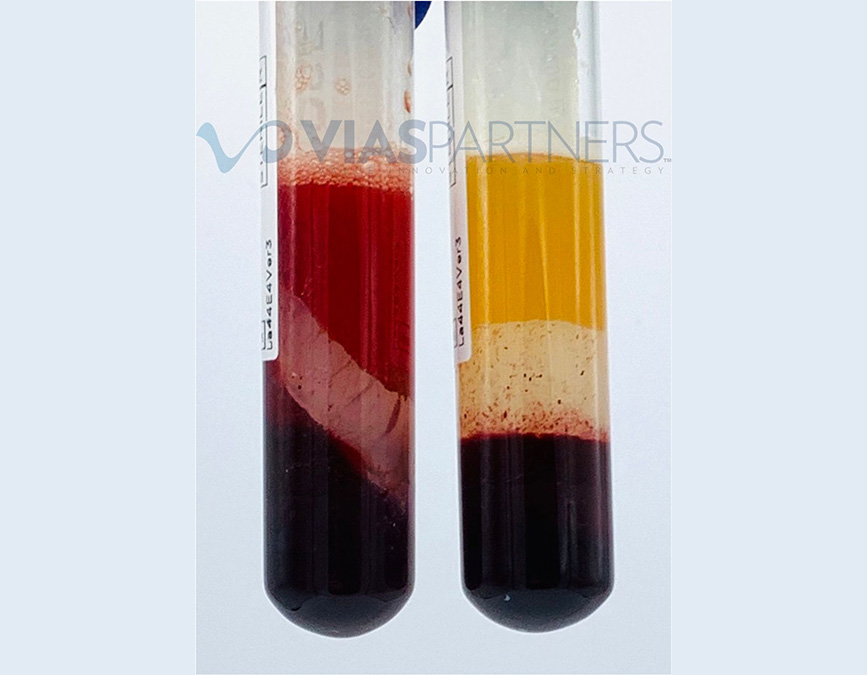This photo is pretty graphic. Both PRP tubes contain a thixotropic gel separator that makes the separation of platelets and plasma from red cells (+/- white cells) easy and automatic.
The tube on the left was spun using a fixed angle centrifuge, the kind where the tube remains on a certain angle during the entire time of centrifugation. Big mistake.
The tube on the right was spun using a swing bucket centrifuge, the kind where the tube can be freely horizontal during the centrifugation process. This is the only way to spin PRP.
Why the only way you ask? The tube on the right has the following features:
1. Uniform G-force across the sample and gel
2. Thicker gel reconstitution with better separation
3. No leakage of red cell as is obvious on the left
4. The gel surface is smaller (circle not ellipse shaped)
5. Minimized contact of platelets to the gel separator
All the blood collection tube manufacturers and centrifuge makers recommend a swing bucket centrifuge for better separation of any sample — yet a number of PRP companies tend to forgo the science and choose the cheaper alternative.
If you are preparing PRP in your lab or practice, use a swing bucket centrifuge.
Next time, I’ll write about the inherent challenges of the thixotropic gel separator. Despite the convenience, the gel is extremely sticky and traps the platelets, often resulting in the preparation of platelet-poor plasma – not platelet-rich plasma. This is a problem and one we’ve worked tirelessly to solve in our lab. We’ve shared our results with most manufacturers – some have rapidly #adopted our teachings, others have smiled and walked on by. It’s OK because the science always outlasts the marketing.
My lab is independent, happily self-funded and in our 5th year of operation. We are open to work with any manufacturer that shares the ethos to advance the science to ultimately help physicians and their patients.

